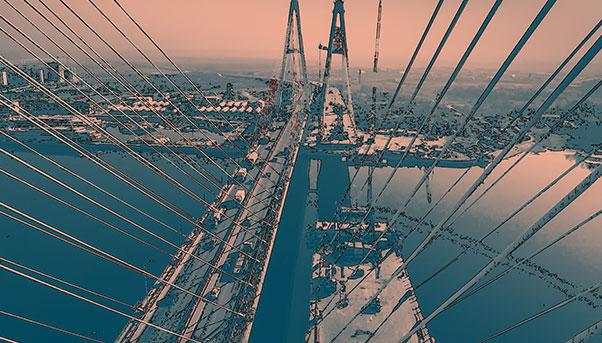
Tear down to rebuild. In other words, erase one footprint to substitute it with another one that’s newer and more innovative; one more capable of interpreting a more modern lifestyle without betraying the essence of the earlier work and without abandoning its legacy.
Sometimes rebuilding is a forced choice, like after a war. Just ask the inhabitants of the city of Dresden. The German city was razed to the ground during World War II, and was so completely rebuilt afterwards that even its historic monuments were brought back to life, and innovative architectural solutions adopted for new housing.
Other times, however, rebuilding is an expression of a desire for rebirth, and of the awareness that an infrastructure work, however iconic it may be, has outlived its useful life and needs to be substituted. Recent history is full of examples, from the Yankee Stadium in the Bronx, in New York City, to the Bay Bridge in San Francisco, partly demolished by the terrible Loma Prieta earthquake in 1989. Both time and innovations in engineering are drivers of renewal, above all for large infrastructure works that supply services to people and become stretched to the breaking point. Something similar happened at the Panama Canal, where after nearly 100 years of “service,” it was substituted by a new Canal that doubled the amount of goods passing from the Atlantic to the Pacific without circumnavigating the American continent.
In order to recount the evolution of strategic infrastructure works, transformed by man into symbols capable even of withstanding the passage of time, “We Build Value” embarks on a tour of some of the largest infrastructure works that were torn down and rebuilt to innovate the work and it entire surroundings. We gathered these stories from all across the world, starting with the home of the New York Yankees in the Bronx which was demolished and rebuilt a few years ago. We move to Moscow to recount what is the largest urban renewal programme ever, and look at the rebuilding of two strategic bridges, San Francisco’s Bay Bridge and the Gerald Desmond Bridge in Long Beach. We wrap up with the dismantling of Pan Am’s iconic Terminal 3 at New York’s J.F.K. airport, a terminal which for many years was the largest in the world, and our last chapter talks about a project that still has not been completed – the construction of a 70-story new headquarters for the JP Morgan Chase bank in midtown Manhattan, which calls for the largest intentional demolition in history.
These stories illustrate the reach and the impact of large engineering works, and the capacity of these works to become symbols that inspire a strong sense of belonging. At the same time, they also demonstrate the undeniable pull of renewal and their need to be continually modernized.


